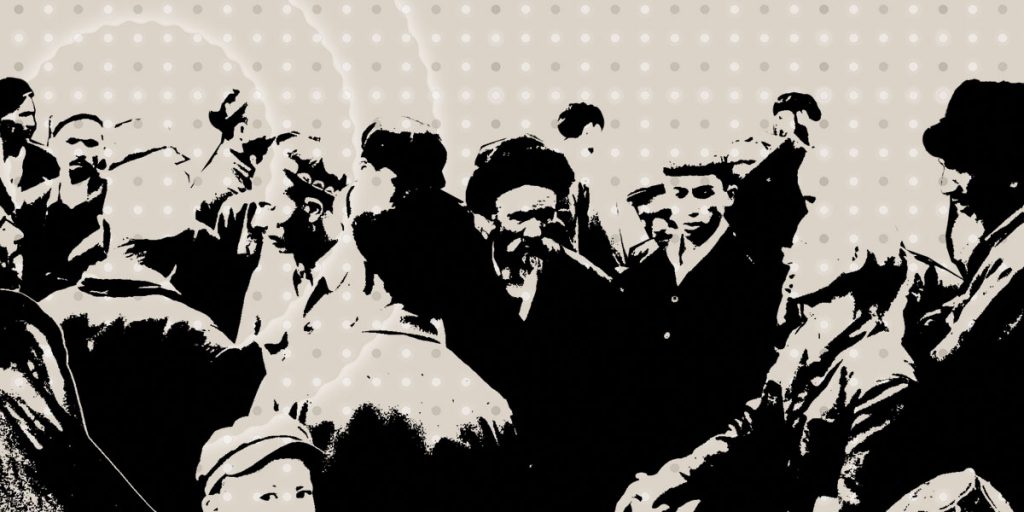
Open air bazaar in Kashgar, Xinjiang
Source: Wikimedia Commons
ON 21 NOVEMBER 2018, Radio Free Asia announced that a court in the Xinjiang Uyghur Autonomous Region (XUAR) had sentenced Abdughapar Abdurusul, a prominent Uyghur businessman and philanthropist, to death. His ‘crime’ was to have made an unsanctioned Hajj pilgrimage to Mecca rather than joining an officially sanctioned group. His wife and eldest son were also detained and dozens of his associates were taken into custody. Later, rumours spread that his wife had died in custody. No one knows what has happened to the couple’s other children.
Making the pilgrimage to Mecca is considered one of the Five Pillars of Islam, and the duty of every Muslim. To the Party-state, however, this ordinary act counts as evidence of religious ‘extremism’. Aburusul’s wife, son and acquaintances were presumed guilty by association. Unfortunately, this is not an isolated case.
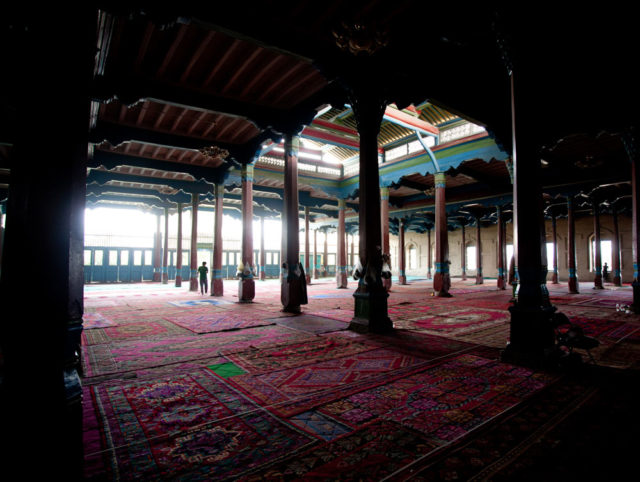
Power over religion: the Party-state is attempting to stamp out religious practice and enforce assimilation on China’s Muslim minorities, including the Uyghurs, Kazakhs, Kyrgyz, and Hui
Photo: Dan Sandoval, dansandoval.com
On the pretence of eliminating ‘extremism’, the Party-state is attempting to stamp out religious practice and enforce assimilation on China’s Muslim minorities, including the Uyghurs, Kazakhs, Kyrgyz, and Hui. Its methods include ‘re-education’ within a large and rapidly expanding system of so-called ‘vocational-education facilities’ and prisons, forcing ordinary Uyghurs to house Han Chinese in their homes (and sometimes even their beds), and intensifying efforts to secularise Xinjiang society.
According to the United Nations Committee on the Elimination of Racial Discrimination, which met in August, around one million Uyghurs and others have disappeared into these camps with no clarity about when they might be released. One Committee member, Gay McDougal, estimated the number at two million. Family members left behind are subject to intrusive and rising levels of surveillance. Children left behind have gone to the homes of relatives if they are lucky, or state orphanages.
What is happening in Xinjiang represents a significant departure from previous policies of relative accommodation of religious and ethnic differences that have been a key part of United Front work in the Reform Era.
The Background
This slow-motion humanitarian disaster has long and complex roots. Ever since the eighteenth-century emperor Qianlong conquered the Silk Road lands to China’s north-west and called it Xinjiang 新疆 (New Frontier), sporadic rebellions have broken out against Beijing’s rule. At 1.6 million square kilometres, Xinjiang accounts for about one-sixth of China’s territory, and its rich resources and strategic location mean Beijing has no intention of ever letting it go (it has borders with India, Pakistan, Afghanistan, Tajikistan, Kyrgyzstan, Kazakhstan, Russia, and Mongolia). Uyghurs, once the majority, now make up about forty-six per cent of the population, following decades of the state’s ‘encouragement’ of Han Chinese immigration. Ever since America launched its War on Terror in 2001, the Chinese Communist Party (CCP) has sought to link any unrest amongst China’s Muslim minorities with foreign radical Islamist movements, and some Uyghurs have indeed gone abroad to fight in Syria. However, there is little if any evidence of such radical influence occurring within Xinjiang itself.
This provides background to the current claims of the CCP that it must take radical measures to counter the Three Evils: separatism, terrorism, and religious extremism.
What is happening today has its more immediate genesis in June 2009, when violence at a factory in Guangdong province left two young Uyghur men dead at the hands of Han co-workers. This led to communal attacks in Urumqi, Xinjiang’s capital, the following month, which left almost two hundred dead among both Han Chinese, the original targets of attacks, as well as Uyghurs, who died at the hands of Han mobs.
These incidents left a legacy of bitterness on both sides. One of the solutions proposed by the CCP was to promote ‘inter-ethnic mingling’ 交融, such as by rewarding intermarriage. Another was an even greater emphasis on Stability Maintenance 维稳, ramping up security across the province. Still, there was sporadic serious violence, both in Xinjiang and elsewhere in the following years. In October 2013, a Uyghur drove a car with his wife and mother towards Tiananmen gate, ploughing through crowds, killing two Filipino tourists, and injuring thirty-eight others. The East Turkestan Islamic Movement claimed responsibility for that terrorist attack. On 1 March 2014, a group of eight Uyghur men and women attacked passengers at Kunming Railway Station with knives, killing thirty-one and injuring another 140. Two months later, on 30 April, a combined knife attack and bombing at Urumqi Railway Station killed three and injured seventy-nine. That attack followed directly on the heels of a visit to the region by Xi Jinping, who was only recently installed as CCP General Secretary; it was, therefore, particularly symbolic. The most dramatic case was in late 2015, when security forces cornered dozens of Uyghur men in the Tianshan Mountains. They had earlier attacked a coalmine killing dozens of Han-Chinese miners. Troops used flamethrowers on the attackers hiding in a cave and shot those escaping. Only one attacker survived.
In March 2017, Xi called for a ‘Great Wall of Steel’ 钢铁长城 to ‘safeguard national unity, ethnic solidarity and social stability’. In August the previous year, he had already appointed Chen Quanguo 陈全国 to the position of CCP Secretary of the XUAR. Chen came to Xinjiang from the Tibet Autonomous Region, where, as Party Secretary, he had developed a new model of intensive policing and ‘grid surveillance’ 网格化管理 involving ‘convenience police stations’ 便民警务站. His other innovations included the ‘double-linked household management system’, by which different households were held responsible for each other’s actions as part of a broader Three-dimensional [Social Stability] Preventive Control System立体化社会治安防控体系. Chen’s watch over Tibet saw the effective elimination of self-immolation protests, which impressed Xi. He then became the first Party Secretary to have served in both areas. Chen applied the methods of intensive policing and grid surveillance developed in Tibet to Xinjiang and its Muslim populations. Scholars such as Adrian Zenz and others have tracked the expansion of the XUAR as a security state using satellite photos as well as information gleaned from websites advertising jobs, and tenders for supplies and construction. These reveal a rapid expansion in the number of security personnel, such as Special Police Units, deployed in the region. In 2016, nearly 32,000 positions were advertised, many to fill the new convenience police stations.
While this Japanese-inspired method, so-called ‘zero distance service’ 让服务零距离, is presented as convenient for citizens who need help, its main purpose is to facilitate surveillance and enable rapid response to any problems. A network of hundreds of thousands of cameras and sensors, aided by China’s increasingly sophisticated Artificial Intelligence capabilities, aims to give security forces the power to identify and track every individual. Police also regularly subject Uyghurs and Kazakhs to random searches and investigate the apps and contacts on their phones. Police can also monitor households via QR codes attached next to the door of every home. At the slightest hint of any problem, suspects are taken away for interrogation or internment.
The principle of preventive policing encourages officials to be suspicious, hyper-vigilant, and proactive; they can be punished if any perceived laxity on their part later turns out to have enabled any sort of incident. Since 2017, security forces have been told to also be on the lookout for at least forty-eight suspicious signs alerting them to extremist tendencies by Muslims. An unauthorised Hajj, as in the case of Abdughapar Abdurusul, is an example of a suspicious act. Others can be as simple as owning a tent, praying, arguing with officials, or having ‘too many’ children. Culpable ‘non-actions’ can include not drinking alcohol, not smoking, not shaving, or not allowing officials to take one’s DNA (See the table opposite for the full list). Not surprisingly, the number of detained citizens has grown rapidly since 2017 as authorities have continued and intensified their Strike Hard Campaign Against Violent Terrorism 严厉打击暴力恐怖活动专项行动 (launched in 2014).
Determining the number of detention centres and detainees has proved difficult. As noted, the UN Committee on the Elimination of Racial Discrimination assessed estimates of between one and two million detained. Such numbers are not surprising in light of the ease with which individuals can be seen to have committed an offence as well as pressure on local security forces to meet quotas of suspicious persons — as revealed by a guard at one prison.
The CCP, which originally refused to acknowledge even the existence of the camps, denies that the number of detainees is that high. But official Chinese statistics for 2017 reveal that arrests in Xinjiang accounted for twenty-one per cent of all arrests nationwide that year, despite the XUAR having only 1.5 per cent of the country’s population. This increase has coincided with Chen’s appointment.
The detention centres consist of a rapidly growing network of jails, pre-existing Re-education Through Labour 劳动教养 camps (officially abolished in 2013, see the China Story Yearbook 2014: Shared Destiny, Chapter 6 ‘The Sword of Discipline and the Dagger of Justice’), and new and refurbished facilities. The latter include factories and old Party schools. Satellite imagery reveals the existence of scores of new detention centres; Adrian Zenz’s research indicates that new facilities are being established at all levels from townships to cities — some 1,200 in all. By the end of 2018, there was conclusive evidence for the existence of almost two hundred large-scale detention centres, with some, such as the one at Dabancheng, having capacity for at least ten thousand people.
On 9 October 2018, the XUAR government issued an important set of regulations that retrospectively created a quasi-legal framework for the internments. Seven days later, Xinhua newsagency used an interview with Xinjiang Governor Shorhat Zakir to announce that: ‘… Xinjiang has launched a vocational education and training program according to the law. Its purpose is to get rid of the environment and soil that breeds terrorism and religious extremism and stop violent terrorist activities from happening’.
In the space of weeks, conscious of international concern about ‘concentration camps’ and human rights violations, the CCP went from denying that any such camps existed to justifying them as crucial for its fight against the Three Evils, and portraying them as centres for ‘vocational’ training, Mandarin language education, and instruction in law and citizenship. This education, according to Zakir, addresses the ‘root causes’ of the region’s extremism problems. All this was dressed in the language of law and promoted as reflecting the will of ‘the People’. The same day, a television report showed purportedly happy Uyghur recipients of this education in a camp in Hetian. No foreign reporters or scholars have been allowed access to any of the camps, nor interviews with any of those interned.
‘Liu Guang’, a Chinese guard who anonymously revealed the ‘transformation through education’ at his camp described four supervisory categories: lenient, ordinary, strict, and enforced. The detainees are subject to rigorous controls, demands to ‘reform’ and regular assessments: those who ‘make progress’ are treated more leniently, and a ‘score’ of ninety-five out of one hundred means the possibility of a monthly visit from family members, although even those who have achieved perfect scores in Mandarin remained incarcerated. Those who have failed to show contrition or learn Mandarin were sentenced to anything from five to thirty years in a detention centre. If there are not enough Uyghurs to fill local quotas, they haul in Han Chinese converts to Islam. Belying claims of being education facilities, guards in the zone of ‘enforced supervision’ are required to be fully armed, carry batons, and wear stab-proof vests.
The relatively few internees who have been released report brutality, abuse, mistreatment, overcrowding, poor sanitation, and inadequate food and water. In their extensive overview of the happenings in Xinjiang, Eradicating Ideological Viruses, Human Rights Watch reported the regular use of torture including, sleep deprivation, beatings, and suspension from the ceiling.
Testifying in Washington after her release, Mihrigul Tursun described not only being shaved and sat in a ‘tiger chair’ — a metal seat in which a prisoner’s hands and feet are shackled, unable to move’ — but also having a strange helmet with electrodes placed on her head, through which she received electric shocks. She described being forced to take unidentified medications, and many of her female inmates ceased menstruating, possibly as a result. Tursun claimed that during her three months’ incarceration nine of her fellow inmates died. Among tenders unearthed by Radio Free Asia were some for the construction of crematoria.
Many towns and villages in Xinjiang have lost a substantial proportion of their Uyghur and Kazakh populations, including nearly all their working-age males, to the camps. Those left behind may be forced to house Han-Chinese officials and other ‘big sisters’ and ‘big brothers’. This is the third and seemingly most intensive such wave of ‘homestays’ since 2014 under the slogan: ‘Visit the People, Benefit the People and Bring Together the Hearts of the People’ 访民情、惠民生、聚民心. The guests are tasked with personifying the care of the state for local people’s welfare, teach them Chinese culture and language, and watching out for any suspicious behaviour or attitudes. If necessary, they can test their assigned family’s attitudes by offering cigarettes, beer, and non-Halal items, including pork. Any indications of Islamic sensitivities must be reported. They specifically target children as sources of information regarding the family’s values and religiosity. Darren Byler’s fieldwork documents both the naiveté of some of these ‘new family members’ and the effectiveness of the Party-state’s penetration of private life.
The state is destroying the physical Islamic heritage of Xinjiang as well, demolishing mosques and tearing down signs at Halal restaurants. The remaining mosques have few worshippers as locals fear to be seen in them. Within schools, universities, government offices, and companies, separate eating facilities for Muslims have disappeared.
The Party-state is also targetting the corps of Uyghur intellectuals and officials who once helped it to manage the province and train the ranks of their successors. One after another, once-trusted and respected Uyghurs and others, already a tiny minority in a Han-dominated system, have been sacked, arrested, detained, or disappeared. The reasons range from forced confessions from those already detained to the need to fill quotas to simple paranoia on the part of their Han colleagues. Queser Qeyum, the editor of a state-run magazine, committed suicide rather than be detained.
The terror unfolding in Xinjiang has had significant repercussions abroad. There is barely a Uyghur family in Australia or elsewhere left unaffected by the detentions and disappearances that have occurred in recent years. And because contact with family or others living overseas is also classed as suspicious, many expatriate Uyghurs are under considerable stress. They fear that discussing the plight of their family back in China could make things worse for them and have repercussions for themselves. At the same time, they hope that raising the issue might result in more information becoming available on the missing or the release of those held.
Xi Jinping’s Not-So-New ‘New Era’
While the crisis in Xinjiang only came to media attention outside of China in 2018, dramatic changes in religious and ethnic policy have been underway for several years. Xi Jinping’s fear for the future of China, based on his understandings of the collapse of the Soviet Union, is probably the most important driver of these changes. Xi and other party leaders worry incessantly about the rise of ethno-national and religious consciousness that is outside of CCP control and that derives succour and inspiration from abroad. This latest drive against Islam coincides with the Party-state stepping up attempts to force Christians to sever relations with believers abroad and ‘Sinicise’ their services, architecture, and even their theology, as well as their encouragement of flag-raising ceremonies in Taoist temples (see Chapter 4 Forum ‘Raising the Flag: Loving Religion, Loving the State’). But the crackdown in Xinjiang is by far the most extensive and brutal.
Current efforts to destroy the Islamic cultural base of Uyghur and Kazakh identity represent the end of long-standing debates within China about the direction of religious and nationality policy. Old-school national minority theorists such as Ma Rong 马戎 advocated a moderate shift towards discussing minorities as ethnic rather than national groups.10 They have clearly lost out to hard-line theorists such as Hu Lianhe 胡联合 and Hu Angang 胡鞍钢, who advocate the active suppression of ethnic elites such as Abdughapar Abdurusul and the scholar and moderate commentator Ilham Tohti (sentenced to life imprisonment in 2009). According to the latter view, the existence of anyone of influence from within Uyghur and other minority communities, no matter how moderate their views, can pave the way for separatist movements, and, therefore, need to be stopped in their tracks.
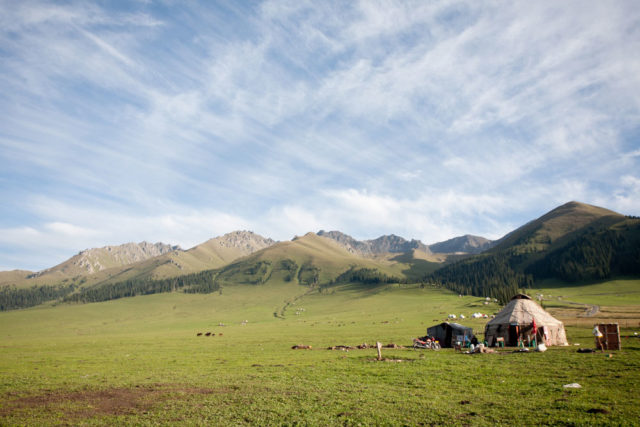
Many towns and villages in Xinjiang have lost a substantial proportion of their Uyghur and Kazakh populations, including nearly all their working-age males, to the detention centres
Photo: Dan Sandoval, dansandoval.com
The apparent ascendancy of the hardliners signals the end of United Front policy in place since the beginning of the Reform Era in the late-1970s. Until about 2014, tensions over Islamic traditions, such as Muslims insisting on Halal food in the workplace or observing Ramadan, would often have been sorted out by upholding respect for religious sensitivities. No more. In 2018, insisting on Halal food is grounds for arrest for religious extremism.
Since coming to power, Xi Jinping has proclaimed that his rule signifies a ‘New Era’ 新时代 for China. It is certainly a new era for Xinjiang and United Front policy. It remains to be seen if forced secularisation and coercive assimilation have any better chance of succeeding in Xi’s era than when the CCP tried similar policies previously — as in the 1950s and during the Cultural Revolution (1966–1976). The failure of those policies led to the post-Mao reforms that Xi seems intent on undoing. Even the advantages of high-tech surveillance and security do not guarantee success — if success is not simply defined as the creation of a prison state. And just as in those earlier periods, the human cost of the attempt will be enormous and last for generations. As for the surveillance and security systems, including grid policing, some observers have suggested that this may be rolled out in other parts of China in the future. A New Era indeed.
Finally, as implied already, foreign governments are also indirectly involved in the happenings in Xinjiang, often by virtue of having Uyghurs as citizens or migrants, such as in Australia. Any government that proclaims the importance of human rights should be extremely concerned. In Australia, the government and politicians have been remarkably quiet despite growing press coverage of the scale and nature of the detentions. The most prominent voice criticising the CCP’s actions has been the Republican, Marco Rubio in the United States, but despite growing anti-China sentiment, the Uyghur issue has yet to break through. Most disconcertingly, it is the muted response from Muslim nations that is most surprising. Despite a growing awareness in such countries, only in Malaysia and Indonesia has protest been significant. Malaysia’s refusal in October to repatriate a group of Uyghurs, ‘Because they had done nothing wrong’,12 stands out for its bluntness. We can only hope that all nations, Muslim and non-Muslim alike, find the courage to make similar calls.
Notes
Adrian Zenz, ‘Xinjiang’s rapidly evolving security state’, China Brief, March 2017, online at: https://jamestown.org/program/xinjiangs-rapidly-evolving-security-state/
Tanner Greer, ‘48 ways to get sent to a Chinese concentration camp’, Foreign Policy, 3 September 2018, online at: https://foreignpolicy.com/2018/09/13/48-ways-to-get-sent-to-a-chinese-concentration-camp/
‘ “Studies” in prison: Staff member uncovers details of a Xinjiang camp’, Bitter Winter, November 27 2018, https://bitterwinter.org/staff-member-uncovers-details-of-a-camp/
John Sudworth, ‘China’s hidden camps: What’s happened to the vanished Uighurs of Xinjiang?’, BBC, online at: https://www.bbc.co.uk/news/resources/idt-sh/China_hidden_camps
Xinhuanet, ‘Full transcript: Interview with Xinjiang government chief on counterterrorism, vocational education and training in Xinjiang’, 16 October 2018, online at: http://www.xinhuanet.com/english/2018-10/16/c_137535821.htm
Human Rights Watch, Eradicating Ideological Viruses: China’s Campaign of Repression Against Xinjiang’s Muslims, Human Rights Watch, 9 September 2018, online at: https://www.refworld.org/docid/5badfce54.html
Maria Danilova, ‘Woman describes torture, beatings in Chinese detention camp’, APNews, 27 November 2018, online at: https://www.apnews.com/61cdf7f5dfc34575aa643523b3c6b3fe
Darren Byler, ‘China’s government has order a million citizens to occupy Uighur homes. Here’s what they think they are doing’, China File, 24 October 2018, online at: http://www.chinafile.com/reporting-opinion/postcard/million-citizens-occupy-uighur-homes-xinjiang
‘Uyghur editor of state-run magazine commits suicide “out of fear” of detention’, Radio Free Asia, 28 September 2018, online at: https://www.rfa.org/english/news/uyghur/suicide-09282018171559.html.
Ma Rong, ‘Reflections on the debate on China’s ethnic policy: my reform proposals and their critics’, Asian Ethnicity, vol.15 no.2: 237–246.
James Leibold, ‘Hu the uniter: Hu Lianhe and the radical turn in Xinjiang policy’, China Brief, 10 October 2018, online at: https://jamestown.org/program/hu-the-uniter-hu-lianhe-and-the-radical-turn-in-chinas-xinjiang-policy/
Reuters, ‘Malaysia released Uygurs because they “did nothing wrong”, PM Mahathir Mohamad says, in move likely to strain relations with China’, South China Morning Post, 15 October 2018, online at: https://www.scmp.com/news/asia/southeast-asia/article/2168563/malaysias-mahathir-disregards-china-says-uygurs-released
